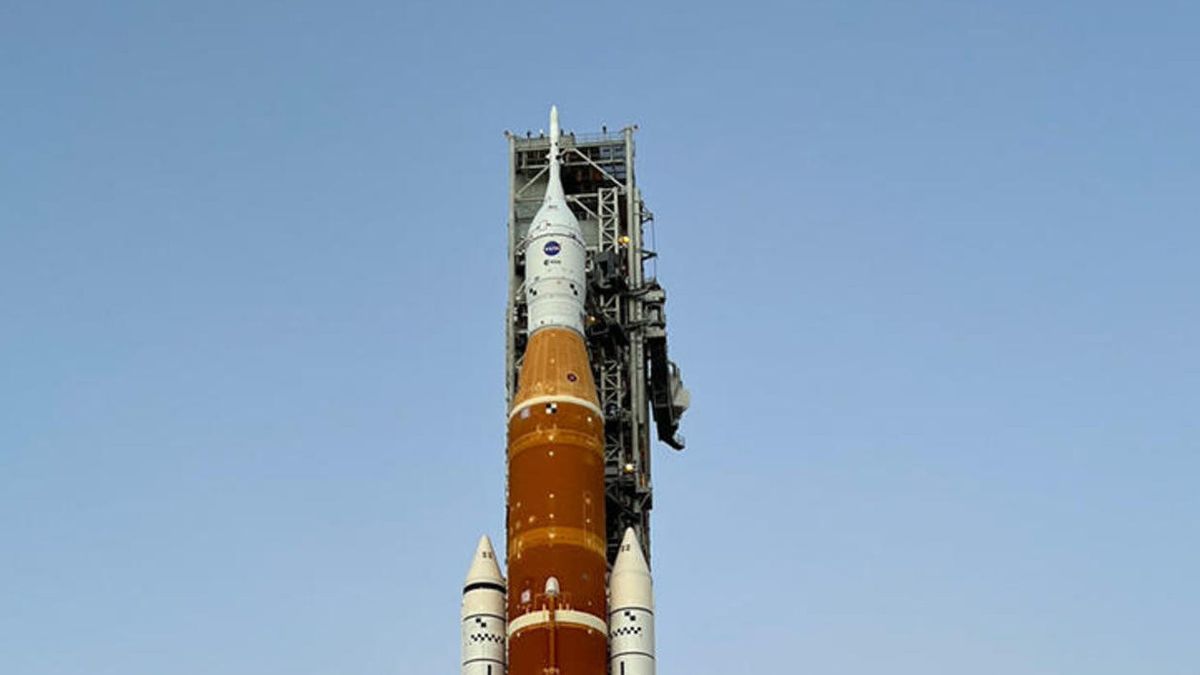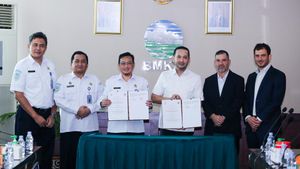JAKARTA - NASA has just launched a giant lunar rocket for the first time. Known as the Space Launch System (SLS), the rocket lifted off from the runway at the Kennedy Space Center in Florida, United States (US) to perform a pre-launch test countdown for the Artemis I mission.
The launch of the SLS rocket and Orion crew capsule marked a significant milestone in US plans for new Moon exploration after years of setbacks.
Both SLS and Orion have cost around US$37 billion or equivalent to IDR 530 trillion to develop including the ground system. Both are the backbone of NASA's Artemis program. The program aims to return astronauts to the Moon and establish a long-term lunar colony as a precursor to human exploration of Mars.
According to reports, this first test went well, and the rocket will be declared ready for a mission where it will send an unmanned test capsule around the Moon. This could happen in the next few months.
A pilotless test flight, expected in late May or June, will take three instrumented mannequins and a Snoopy doll from Peanuts beyond the Moon and back into the Pacific Ocean to pave the way for the first piloted Artemis mission in 2024.
SLS is a giant under 100 meters high. It was designed to be more powerful than the Apollo Saturn vehicles of the late 1960s and early 1970s. Equipped with four upgraded shuttle main engines and two extended solid-fuel boosters. The SLS will weigh in at 5.75 million pounds when loaded with propellant, generating 8.8 million pounds of thrust at takeoff.
Launching BBC International, Friday, March 18, this rocket will have the thrust that not only sends astronauts far beyond Earth, but also a lot of equipment and cargo.
"The first launch of the Vehicle Assembly Building (VAB), it was truly an iconic moment for this vehicle. Being here for a new generation of super-heavy lift exploration class vehicles is a day to remember," said NASA Associate Administrator for exploration systems development, Tom. Whitmeyer.
Now, SLS will be gearing up for wet dress practice, likely to happen on April 3. The scientists plan to fully load the SLS core fuel tank with liquid hydrogen and supercooled liquid oxygen propellant to perform a simulated launch countdown. The launch will stop seconds before the four R-25 rocket engines fire up in a top-to-bottom evaluation of the entire system.
SEE ALSO:
The Orion crew capsule is capable of carrying four astronauts on an excursion into space. They are expected to be put into service on the Artemis II mission, which will fly around the Moon shortly after the unmanned Artemis I mission, scheduled for May 2022 at the latest.
While NASA is developing the SLS, SpaceX CEO Elon Musk is preparing a larger vehicle at his R&D facility in Texas. He calls his giant rocket Starship.
Like the SLS, it hasn't had its maiden flight yet. Unlike the SLS, the Starship has been designed to be completely reusable and should therefore be much cheaper to operate.
SpaceX says the Starship will be capable of delivering about 100 tonnes of payload. However, the rocket will need to be refueled before leaving Earth orbit. While it can carry less and is not reusable, the SLS does not require refueling.
The English, Chinese, Japanese, Arabic, and French versions are automatically generated by the AI. So there may still be inaccuracies in translating, please always see Indonesian as our main language. (system supported by DigitalSiber.id)















